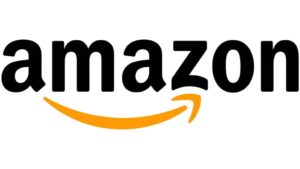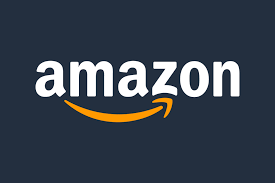AMAZON

An overview and detailed information about Amazon, the e-commerce and technology giant.
1. Company History and Origins
Amazon was founded in 1994 by Jeff Bezos in Seattle, Washington. Originally started as an online bookstore, Amazon has since expanded into a diverse range of products and services.
Key milestones in Amazon’s history include:
– 1995: Amazon.com is launched as an online bookstore.
– 1997: Amazon goes public with its initial public offering (IPO).
– 1999: Amazon expands beyond books to sell music, videos, consumer electronics, and more.
– 2002: Launch of Amazon Web Services (AWS), the company’s cloud computing division.
– 2007: Introduction of the Kindle e-reader.
– 2010: Amazon acquires Zappos, an online shoe and clothing retailer.
– 2013: Launch of Amazon Prime, the company’s subscription-based fast shipping and media streaming service.
– 2017: Acquisition of Whole Foods Market for $13.7 billion.
– 2018: Jeff Bezos steps down as CEO, with Andy Jassy taking over the role.
– 2021: Amazon surpasses $100 billion in quarterly revenue for the first time.
2. Products and Services
Amazon’s business model has evolved from an online bookstore to a diverse technology and e-commerce conglomerate. Its current product and service offerings include:
E-commerce:
– Amazon.com: The company’s flagship online retail marketplace
– Amazon Prime: Subscription service offering fast shipping, streaming media, and other benefits
– Amazon Warehouse: Discounted used and open-box products
– Amazon Basics: Amazon’s line of private-label consumer products
Cloud Computing:
– Amazon Web Services (AWS): Provides a wide range of cloud computing services, including storage, computing, and database solutions
Hardware:
– Kindle: E-readers and tablets
– Fire TV: Streaming devices for TVs
– Echo: Smart speakers and other Alexa-enabled devices
Content and Media:
– Amazon Prime Video: Streaming video service
– Amazon Music: Music streaming service
– Amazon Publishing: Traditional and self-publishing services
Other Services:
– Amazon Marketplace: Platform for third-party sellers to list and sell their products
– Amazon Fulfillment: Logistics and order fulfillment services for businesses
– Amazon Web Services: Comprehensive cloud computing platform
3. Financial Performance and Market Position
Amazon is one of the world’s most valuable and influential companies. Key financial and market highlights include:
– Revenue: In 2022, Amazon reported $514 billion in total revenue.
– Profitability: The company has seen fluctuating profit margins, with net income of $33.4 billion in 2022.
– Market Capitalization: As of 2023, Amazon’s market cap often exceeds $1 trillion, making it one of the most valuable publicly traded companies.
– E-commerce Market Share: Amazon dominates the US e-commerce market, with an estimated share of over 40%.
– Cloud Computing: AWS is the world’s leading cloud computing platform, with a market share of over 30%.
– Retail and Logistics: Amazon has a significant presence in various retail sectors, including electronics, apparel, and grocery, and owns an extensive logistics and delivery network.
4. Leadership and Corporate Culture
Key leadership:
– Jeff Bezos: Founder and former CEO, now Executive Chair
– Andy Jassy: CEO since 2021, previously led the AWS division
– Jeff Wilke: Former CEO of Worldwide Consumer, retired in 2021
Corporate culture:
– Customer-centric approach: A strong focus on meeting and anticipating customer needs
– Analytical decision-making: Reliance on data and metrics to guide business decisions
– Innovation and risk-taking: Encouragement of experimentation and the pursuit of ambitious projects
– Emphasis on speed and efficiency: Rapid iteration and a focus on getting products and services to market quickly
– Controversy over workplace practices: Concerns raised about employee treatment and work-life balance
5. Innovation and Technology Focus

Amazon has been at the forefront of various technological innovations, including:
– Amazon Web Services (AWS): The company’s cloud computing division, a market leader in providing infrastructure, platform, and software as a service
– Artificial Intelligence and Machine Learning: Powering features like Alexa, Amazon’s virtual assistant, and driving innovation in areas like computer vision and natural language processing
– Robotics and Automation: Deploying robots and automated systems in its warehouses and logistics operations
– Logistics and Supply Chain: Developing innovative solutions for order fulfillment, delivery, and supply chain optimization
– Renewable Energy: Investing in renewable energy sources to power its operations and data centers
– Healthcare: Exploring opportunities in the healthcare industry, including the acquisition of PillPack and the development of Amazon Care
6. Amazon’s Ecosystem and Diversification
Beyond its core e-commerce business, Amazon has expanded into various other sectors, creating a vast and interconnected ecosystem:
– Amazon Marketplace: A platform for third-party sellers to list and sell their products
– Amazon Prime: A subscription service offering fast shipping, streaming media, and other benefits
– Whole Foods: The organic grocery store chain acquired by Amazon in 2017
– Amazon Studios: The company’s film and television production division
– Amazon Logistics: The company’s in-house logistics and delivery network
– Amazon Advertising: A rapidly growing advertising platform
This diversification has allowed Amazon to leverage its scale, customer base, and technological capabilities to become a dominant force in multiple industries.
7. Regulatory Challenges and Antitrust Scrutiny
Amazon’s size and market dominance have led to increased regulatory scrutiny and antitrust investigations, including:
– Allegations of anti-competitive practices, such as favoring its own products over those of third-party sellers
– Concerns about the company’s data collection and usage practices, particularly in relation to its treatment of independent sellers
– Investigations by US, EU, and other regulatory bodies into potential abuse of market power
These challenges have required Amazon to navigate a complex regulatory landscape and adapt its business practices to address concerns raised by policymakers and lawmakers.
8. Environmental and Social Initiatives
Amazon has made various commitments and investments in environmental sustainability and social responsibility, including:
– Climate Pledge: A commitment to achieve net-zero carbon emissions by 2040, 10 years ahead of the Paris Agreement
– Renewable Energy: Investing in renewable energy projects to power its operations and data centers
– Sustainable Packaging: Efforts to reduce packaging waste and increase the use of recycled materials
– Employee Welfare: Providing competitive wages, benefits, and opportunities for career development
– Diversity and Inclusion: Initiatives to foster a more diverse and inclusive workforce
These initiatives demonstrate Amazon’s efforts to address environmental and social concerns, though the company continues to face criticism in some areas.
9. Future Outlook and Expansion Plans
As Amazon continues to evolve, key areas of focus and potential expansion include:
– Further Growth in Cloud Computing: Maintaining and expanding its leadership position in the rapidly growing cloud services market
– Healthcare and Pharmacy: Exploring opportunities to disrupt the healthcare industry, building on its acquisition of PillPack
– Logistics and Delivery: Enhancing its in-house logistics and delivery capabilities to improve efficiency and reduce reliance on third-party carriers
– Brick-and-Mortar Retail: Expanding its physical retail presence, as seen with the acquisition of Whole Foods and the growth of Amazon Go stores
– Artificial Intelligence and Automation: Leveraging AI, machine learning, and robotics to drive innovation and efficiency across its operations
– International Expansion: Continued growth in international markets, particularly in emerging economies
Amazon’s ability to adapt to changing market conditions, regulatory environments, and consumer preferences will be crucial in shaping its future trajectory as a technology and e-commerce leader.

Let’s dive deeper into Amazon’s future plans and growth strategies. Here are some key areas the company is focusing on for future expansion and development:
1. Cloud Computing and AWS Dominance
– Amazon Web Services (AWS) is the market leader in the cloud computing industry, but faces increasing competition from Microsoft Azure and Google Cloud.
– AWS continues to innovate and expand its service offerings, including compute, storage, databases, analytics, machine learning, and more.
– Amazon is investing heavily in building out its global network of data centers to support the growing demand for cloud infrastructure and services.
– Key priorities for AWS include expanding its presence in the enterprise market, gaining ground in the public sector, and offering specialized industry-specific cloud solutions.
2. E-commerce and Logistics Enhancements
– Amazon aims to further strengthen its position as the dominant e-commerce platform globally.
– Investments in faster and more efficient delivery services, such as one-day and same-day shipping, to improve the customer experience.
– Expansion of in-house logistics and transportation capabilities to reduce reliance on third-party carriers.
– Leveraging automation, robotics, and data analytics to optimize its fulfillment and distribution networks.
– Continued growth of Amazon Marketplace for third-party sellers and the development of new seller tools and services.
3. Healthcare and Pharmacy
– Amazon’s 2018 acquisition of PillPack, an online pharmacy, signaled its entry into the healthcare sector.
– Plans to disrupt the traditional healthcare and pharmacy industries by leveraging technology, data, and logistics expertise.
– Potential offerings could include online pharmacy services, telehealth, and integration of healthcare services into the Amazon ecosystem.
– Exploration of opportunities to improve healthcare supply chain efficiency and reduce costs for employers and consumers.
4. Brick-and-Mortar Retail Expansion
– Despite being an e-commerce giant, Amazon has been expanding its physical retail presence.
– The 2017 acquisition of Whole Foods Market provided a network of physical grocery stores to complement its online offerings.
– Rollout of Amazon Go, a chain of cashierless convenience stores, showcasing the company’s use of technology to reimagine the in-store shopping experience.
– Potential for further expansion into physical retail formats, including apparel, electronics, and other product categories.
5. Artificial Intelligence and Automation

– Continued investment in developing advanced artificial intelligence and machine learning capabilities.
– Integration of AI and automation across Amazon’s operations, from supply chain optimization to customer service.
– Expansion of Alexa and other voice-based technologies to power the company’s devices and services.
– Exploration of robotics and automation to enhance warehouse efficiency and delivery capabilities.
6. International Expansion
– Amazon aims to grow its global footprint, particularly in emerging markets with large populations and rising middle classes.
– Strategies include localizing product offerings, building out logistics and fulfillment infrastructure, and adapting to local regulatory environments.
– Targeted expansion in regions like India, Southeast Asia, Latin America, and Africa to capture new growth opportunities.
7. New Product Categories and Diversification
– Amazon is continuously exploring opportunities to enter new product and service categories.
– This could include further expansion into sectors like financial services, entertainment, education, and sustainability.
– Leveraging the company’s technological expertise, customer base, and ecosystem to disrupt traditional industries.
Amazon key focus areas and growth strategies that will likely shape Amazon’s future. The company’s ability to execute on these plans, navigate regulatory challenges, and adapt to changing market conditions will be crucial in determining its long-term trajectory as a technology and e-commerce leader.
Future-focused initiatives or aspects of Amazon’s strategic direction commendable.R&D(Reasearch and Development) is keep Amazon ahead and leadership position.
AMAZON FUTURE SHARE PRICE PREDICTION
YEAR PRICE(USD)
2024 178
2025 138
2026 168
2027 212
2028 262
2029 198
2030 240
Price may vary finacial and market scenario of states…..it is writes analysis
Seek independent professional consultation in the form of legal, financial, and fiscal advice before making any investment decision.
